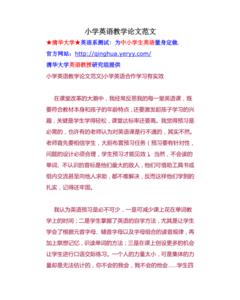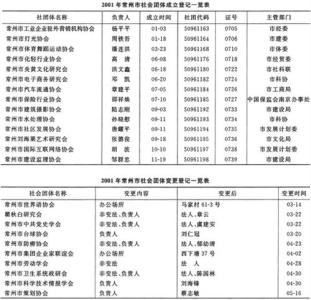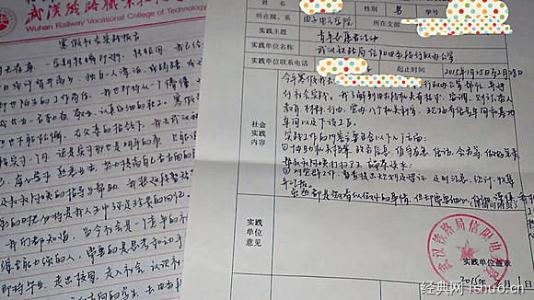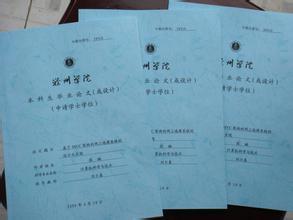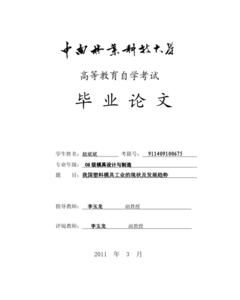参考文献是在学术研究过程中,对某一著作或论文的整体的参考或借鉴。下面是小编给大家整理的参考文献英文范文,供大家参阅!
参考文献英文范文:英文参考文献标准格式
一、参考文献的类型
参考文献(即引文出处)的类型以单字母方式标识,具体 如下:
--专著,著作
[C]--论文集(一般指会议发表的论文续集,及一些专题论文集,如《***大学研究生学术论文集》
[N]-- 报纸文章
[J]--期刊文章:发表在期刊上的论文,尽管有时我们看到的是从网上下载的(如知网),但它也是发表在期刊上的,你看到的电 子期刊仅是其电子版
[D]--学位论文 :不区分硕士还是博士论文
--报告:一般在标题中会有"关于****的报告"字样
[S]-- 标准
[P]--专利
[A]--文章:很少用,主要是不属于以上类型的文章
[Z]--对于不属于上述的文献类型,可用字 母"Z"标识,但这种情况非常少见
常用的电子文献及载体类型标识:
[DB/OL] --联机网上数据(database online)
[DB/MT] --磁带数据库(database on magnetic tape)
[M/CD] --光盘图书(monograph on CDROM)
[CP/DK] --磁盘软件(computer program on disk)
[J/OL] --网上期刊(serial online)
[EB/OL] --网上电子公告(electronic bulletin board online)
很显然,标识的就是该资源的英文缩写,/前面表示类型,/后面表示资源的载体,如OL表示在线资源
二、参考文献的格式 及举例
1.期刊类
【格式】[序号]作者.篇名[J].刊名,出版年份,卷号(期号)起止页码.
【举例】
[1] 周融,任志国,杨尚雷,厉星星.对新形势下毕业设计管理工作的思考与实践[J].电气电子教学学报,2003(6):107-109.
[2] 夏鲁惠.高等学校毕业设计(论文)教学情况调研报告[J].高等理科教育,2004(1):46-52.
[3] Heider, E.R.& D.C.Oliver. The structure of color space in naming and memory of two languages [J]. Foreign Language Teaching and Research, 1999, (3): 62 67.
2.专著类
【格式】[序号]作者.书名.出版地:出版社,出版年份:起止页码.
【举例】
[4] 刘国钧,王连成.图书馆史研究.北京:高等教育出版社,1979:15-18,31.
[5] Gill, R. Mastering English Literature . London: Macmillan, 1985: 42-45.
3.报纸类
【格 式】[序号]作者.篇名[N].报纸名,出版日期(版次).
【举例】
[6] 李大伦.经济全球化的重要性[N]. 光明日报,1998-12-27(3).
[7] French, W. Between Silences: A Voice from China[N]. Atlantic Weekly, 1987-8-15(33).
4.论文集
【格式】[序号]作者.篇名 [C].出版地:出版者,出版年份:起始页码.
【举例】
[8] 伍蠡甫.西方文论选[C]. 上海:上海译文出版社,1979:12-17.
[9] Spivak,G. "Can the Subaltern Speak?"[A]. In C.Nelson & L. Grossberg(eds.). Victory in Limbo: Imigism [C]. Urbana: University of Illinois Press, 1988, pp.271-313.
[10] Almarza, G.G. Student foreign language teacher's knowledge growth [A]. In D.Freeman and J.C.Richards (eds.). Teacher Learning in Language Teaching [C]. New York: Cambridge University Press. 1996. pp.50-78.
5. 学位论文
【格式】[序号]作者.篇名[D].出版地:保存者,出版年份:起始页码.
【举例】
[11] 张筑生.微分半动力系统的不变集[D].北京:北京大学数学系数学研究所, 1983:1-7.
6.研究报告
【格式】[序号]作者. 篇名.出版地:出版者,出版年份:起始页码.
【举例】
[12] 冯西桥.核反应堆压力管道与压力容器的LBB分析.北京:清华大学核能技术设计研究院, 1997:9-10.
7.专利
【格 式】[序号]专利所有者.题名[P].国别:专利号,发布日期.
【举例】
[13] 姜锡洲.一种温热外敷药制备方案[P].中国专利:881056073, 1989 07 26.
8.标准
【格式】[序号]标准编 号,标准名称[S].
【举例】
[14] GB/T 16159-1996, 汉语拼音正词法基本规则 [S].
9.条例
【格 式】[序号]颁布单位.条例名称.发布日期
【举例】
[15] 中华人民共和国科学技术委员会.科学技术期刊管理办法[Z].1991-06-05
10.电子文献
【格式】[序号]主要责任者.电子 文献题名.电子文献出处[电子文献及载体类型标识].或可获得地址,发表或更新日期/引用日期.
【举例】
[16] 王明亮.关于中国学术期刊标准化数据库系统工程的进展[EB/OL].http: //www.cajcd.edu.cn/pub/wml.txt/980810 2.html, 1998 08 16/1998 10 04.
[17] 万锦.中国大学学报论文文摘(1983 1993).英文版 [DB/CD]. 北京: 中国大百科全书出版社, 1996.
11.各种未定 义类型的文献
【格式】[序号] 主要责任者.文献题名[Z].出版地:出版者, 出版年.
特别说明:凡出现在"参考文献"项中的标点 符号都失去了其原有意义,且其中所有标点必须是半角,如果你的输入法中有半角/全解转换,则换到半角状态就可以了,如果你的输入法中没有这一转换功能,直 接关闭中文输入法,在英文输入状态下输入即可.
其实,很多输入法(如目前比较流行的搜狐输入法)都提供了四种组合:
(1)中文标点+ 全角:这时输入的标点是这样的,:【1】-(而这时,我没有找到哪个键可以输入 / 符号)也就是说,这些符号是一定不能出现在"参考文献"中的;
(2) 中文标点+半角:这时输入的标点是这样的,:【1】-(这时,我还是没有找到哪个键可以输入 / 符号)也就是说,这些符号也不能出现在"参考文献"中的;
上面列出的符号,中间没有任何的空格,你能看出它们有什么区别吗?我看只是-的宽度有 一点点不同,其它都一样
(3)英文标点+全角:这时输入的标点是这样的,.:[1]-/
(4)英文标点+半角:这时输入的标点是这样 的,.:[1]-/
从这两项可以明显的看出,半角和全角其实最大的差别是所占的宽度不一样,这一点对于数字来说最为明显,而英文标点明显要比 中文标点细小很多(也许因为英文中,标点的功能没有中文那么复杂,就是说英文中标点符号的能力没有中文那么强大)
所以,很多人在写"参考文献" 时,总是觉得用英文标点+半角很不清楚,间距也太小,其实这点完全不用担心如果你觉得真的太小不好看,就用英文标点+全角吧而在[1] 之后,一般也都有一个空格
对于英文参考文献,还应注意以下两点:
①作者姓名采用"姓在前名在后"原 则,具体格式是:姓,名字的首字母. 如: Malcolm Richard Cowley 应为:Cowley, M.R.,如果有两位作者,第一位作者方式不变,&之后第二位作者名字的首字母放在前面,姓放在后面,如:Frank Norris 与Irving Gordon应为:Norris, F. & I.Gordon.
②书名、报刊名使用斜体字,如:Mastering English Literature,English Weekly.
三、注释
注释是对论文正文中某一特定内容的进一步解释或补 充说明注释应置于本页页脚,前面用圈码①、②、③等标识
参考文献英文范文:英文论文参考文献格式写法
Learning Advice Centre
your in the author/date system) and, for law students or in dissertations, the numeric system. Different subject areas use slight variations of these systems (and other systems do exist) so you must consult your course/module handbook for clarification of the specific conventions that you are expected to use within your subject area(s).
References need to appear in two places:
1. within the body of your writing include: author‟s surname, year of publication and, if quoting, the exact page number from which the quote is taken;
2. in the bibliography include at least: author‟s surname, initial(s), year of publication, title of text/chapter, edition, publisher & place of publication; see page 3 for specific details that apply to referencing different sources. There are two ways in which you can reference, or cite, another person's work: a) by paraphrasing; this shows you have fully interpreted what you have read - see Learning Skills Help Sheet on How to Paraphrase;
1.1 References within the body of the text - Harvard System
b) by quoting directly; follow with a comment to show relevance/understanding If the direct quotation is more than two lines, you should indent it as a separate paragraph e.g.:
As Cottrell (2003, p.148) points out
“Our views of what is „intelligent‟ can prevent us from developing our minds to their full potential. People who feel they are „not very bright‟ or „not very creative‟ probably will fulfil that estimation of themselves. On the other hand, positive thinking and constructive mental activity develop the mind.”
Citing secondary sources:
If you are referencing a work cited by the author of the text you are reading, you should cite the original work as being within a secondary source i.e. what what the writer of the book you are reading has read, using the following method: According to De Bono (1994, cited in Cottrell, 2003, p.148), “clever people are often hampered by their apparent intelligence in two ways:” they are good at arguing and defending their point of view; they indulge in negative criticism which is a quick, easy and dramatic way of proving someone wrong.
Cont'd
You can make an appointment with the Learning Advisor if you wish to receive more individual advice on your independent learning skills. Email or phone 020 7911 5000 ext. 2364.
Learning Advice Centre
reference appears as a footnote at the bottom of the page e.g.: There were many changes in the British diet in the period after 1870. Fruit
became more common, especially in the form of fruit jam. Even the fish-and-chip shop dates from the same period.1
(Note: See bottom of this page for associated footnote.)
To insert footnotes using Word, click on the place
in your document where you want to insert the
footnote.
Then click on the Insert menu, select Reference,
then click on Footnote.
Another window will then open that will allow you to format the
footnotes manually, if you require.
Once the footnote has been inserted in the text and it appears
at the bottom of the page, click next to the number at the
bottom to add the reference details: author surname, initial(s),
publication year, title of work/article, page number, etc.
Once you have referenced an author for the first time using the numeric system you do not have to repeat that same reference in full again. If the same work is referenced consecutively on the same page use: ibid. = (from the Latin „ibidem‟, meaning „the same‟) or
op.cit. = (from the Latin „opere citado‟ meaning „in the work already cited‟)
If the same work is referenced on another page, list the author‟s surname, initials and date of publication again followed by op.cit. and the page number.
Different page numbers for the citations you use must be listed with each footnote (see example below).2
Hobsbawm, H., (1990), The Eating Habits of the British People, p. 162 2 ibid., p. 163
1
Learning Advice Centre according to
Books Heinz, E., (2000), A History of Baked Beans, Arnold, London If there are two authors you must list both authors‟ names e.g.: Heinz, E., and McDonald, R., (2001), A History of Baked Beans, Arnold, London If there are more than two authors, name the first author followed by ‘et al’ (Latin meaning „and others‟) e.g.:
Heinz, E., et al., (2002), The Bean and Other Legumes, Routledge, New York If the book has more than one edition, you must state which edition you have used e.g.:
Heinz, E., and McDonald, R., (2006), A History of Baked Beans, (2nd Ed.), Arnold, London
An article in a book Johnson, S., (1998a), The Cornflake in History, In: Jennings, N., (Ed.) Food for Thought, Edinburgh University Press, UK
Journal articles Johnson, S., (1998b), „Deconstructing the pre-millennial diet: Special K and postmodernism‟, Cultural Studies 11, 1: pp.32–44
This means that an article by Sarah Johnson called „Deconstructing the pre-millennial diet: Special K and postmodernism‟ was published in the journal Cultural Studies, volume 11, number 1, on pages 32 to 44. This issue of the journal was published in 1998.
Where you have referenced two or more separate works by the same author that were published in the same year, add alphabetical notation after the publication year in both the text and bibliography to distinguish between the works. (See examples above.)
E-journal articles Jimenez, R., (2003), „Sex Differences in L2 Vocabulary Learning Strategies‟, International Journal of Applied Linguistics 13, 1, pp.54-77, [online], available from: [Accessed 13/10/2006]
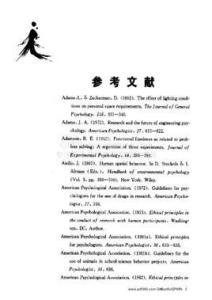
For e-journals/books you must state that it is an online resource, cite the URL and include the date you accessed it at the end in addition to including the journal volume/number and the publication year, as above.
Learning Advice Centre acceptable title and state the date you accessed the site e.g.: Holmes, A., (2000), Greenpeace wins media war, [online], available from: [Accessed 25/10/2006].
If you cannot find & state the author‟s name, use the name of the organisation, e.g.: BBC, (2007), Northern Ireland: The Troubles, [online], available from:
[Accessed 30/04/2007].
Newspaper articles
List the writer‟s surname and initial(s), year of publication, title of article, title of newspaper followed by the full date of publication, section of the paper and page number, e.g.: Ratner, C., (2000), „Magazine sparks love feud‟, The Independent, 10 October 2000, Thursday Review: p.14
Reference to a Thesis
List the surname, initials, year, title, type of thesis, name of institution submitted to: Smith, J., (2005), Linguistic Significance of Teenage Slang in the UK, (PhD), University of Westminster
TV Programmes
Following the series title list the number and title of the episode, year, transmitting channel followed by the full date and time, if known, of transmission. Venice, Episode 4; Death, (2004), BBC 2, 12/12/2004
Contributions in Programmes
Individual speakers or contributors to programmes should be referenced by name followed by year, programme title, channel and date of transmission e.g.: Brown, G., (2007), Live Treasury Questions, BBC Parliament, 29/03/2007 DVD/Video
List the title, year of production, format, Director‟s name, production place and organisation, e.g.: Dogma, (1999), VHS, Directed by Kevin Smith, View Askew
Learning Advice Centre
o create a bibliographic list that can be imported into your word document
To log in to RefWorks use your Athens username and password.
NOTE: before you start to use RefWorks it is highly advisable that you either look at the guidance on the library home page or work through the online tutorials. RefWorks is not a tool that can be learned in 5 minutes and used as a last minute quick fix if you are behind on an assignment.
Remember, as with any assignment, you should ensure that once you have imported your bibliography you edit and format it to match your departmental protocol; bibliographical information created using RefWorks may be formatted in an alternative way.
References:
Cottrell, S., (2003), Skills for Success; The Personal Development Planning Handbook, Palgrave Macmillan, UK Holland, M., (2006), Citing References, Academic Services, Bournemouth University,
参考文献英文范文:英文参考文献格式
英文文献采用“APA格式”:
单一作者著作的书籍:
姓,名字首字母.(年). 书名(斜体). 出版社所在城市:出版社.
Sheril, R. D. (1956). The terrifying future: Contemplating color television. San Diego: Halstead.
两位作者以上合著的书籍:
姓,名字首字母., & 姓,名字首字母.(年). 书名(斜体). 出版社所在城市:出版社. Smith, J., & Peter, Q. (1992). Hairball: An intensive peek behind the surface of an enigma. Hamilton, ON: McMaster University Press.
文集中的文章:
Mcdonalds, A. (1993). Practical methods for the apprehension and sustained containment of supernatural entities. In G. L. Yeager (Ed.), Paranormal and occult studies: Case studies in application (pp. 42–64). London: OtherWorld Books.
期刊中的文章(非连续页码):
Crackton, P. (1987). The Loonie: God's long-awaited gift to colourful pocket change? Canadian Change, 64(7), 34–37.
期刊中的文章(连续页码):
姓,名字首字母.(年). 题目. 期刊名(斜体). 第几期,页码.
Rottweiler, F. T., & Beauchemin, J. L. (1987). Detroit and Narnia: Two foes on the brink of destruction. Canadian/American Studies Journal, 54, 66–146.
月刊杂志中的文章:
Henry, W. A., III. (1990, April 9). Making the grade in today's schools. Time, 135, 28-31.
 爱华网
爱华网